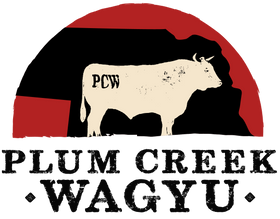Wagyu Myths Debunked: Separating Fact from Fiction
Wagyu beef is one of the most luxurious and sought-after meats in the world, but with its popularity comes a lot of misinformation. From myths about its origins to misconceptions about grading and pricing, there’s plenty of confusion surrounding this premium beef. Today, we’re setting the record straight by debunking some of the biggest Wagyu myths.
Myth #1: Wagyu and Kobe Beef Are the Same Thing
🚫 False! While all Kobe beef is Wagyu, not all Wagyu is Kobe.
✅ The Truth:
-
Wagyu refers to four specific Japanese cattle breeds known for their superior marbling.
-
Kobe beef is a specific brand of Wagyu from the Hyogo prefecture in Japan, meeting strict certification standards.
-
There are other premium Wagyu brands like Matsusaka, Omi, and Hida that are just as exceptional.
Myth #2: All Wagyu Beef Comes from Japan
🚫 False! Wagyu is now raised worldwide, including the U.S., Australia, and beyond.
✅ The Truth:
-
While Japan is the birthplace of Wagyu, high-quality Wagyu cattle have been bred in America, Australia, and other countries for decades.
-
American Wagyu is often a cross between Japanese Wagyu and Angus, creating a unique flavor profile.
-
Fullblood Wagyu (100% Japanese genetics) is still available outside Japan, but it’s rarer and more expensive.
Myth #3: Wagyu Is Just “Fancy” Regular Beef
🚫 False! Wagyu is genetically superior to conventional beef.
✅ The Truth:
-
Wagyu cattle have a unique genetic predisposition for high levels of intramuscular fat (marbling), making it incredibly tender and flavorful.
-
The fat in Wagyu has a lower melting point, creating a rich, buttery texture unlike any other beef.
-
Unlike standard beef, Wagyu cattle are raised on specialized feeding programs for 600+ days to enhance marbling.
Myth #4: Wagyu is Unhealthy Because of Its Fat Content
🚫 False! Wagyu fat is actually healthier than conventional beef fat.
✅ The Truth:
-
Wagyu beef is high in monounsaturated fats, the same heart-healthy fats found in olive oil and avocados.
-
It contains a better ratio of omega-3 and omega-6 fatty acids, which have anti-inflammatory benefits.
-
Because of its rich flavor, you can enjoy smaller portions while still feeling satisfied.
Myth #5: Wagyu Must Be Cooked Well-Done to Render the Fat
🚫 False! Wagyu is best enjoyed at medium-rare to medium for optimal flavor.
✅ The Truth:
-
The fat in Wagyu melts at a lower temperature than regular beef, so it doesn’t need excessive cooking.
-
Cooking it beyond medium can actually diminish the texture and delicate flavors.
-
For the best experience, Wagyu should be seared quickly at high heat and served warm.
Myth #6: Wagyu Isn’t Worth the Price
🚫 False! The quality, flavor, and texture make Wagyu a premium investment.
✅ The Truth:
-
The superior marbling, tenderness, and umami-rich flavor of Wagyu are unmatched.
-
Wagyu cattle require more time, care, and specialized feeding, leading to its higher price.
-
Even small portions of Wagyu deliver a more luxurious dining experience than regular beef.
Final Thoughts: The Truth About Wagyu
Wagyu isn’t just hype—it’s a truly unique beef experience that stands out from all other meats. Now that you know the facts, you can confidently enjoy Wagyu without falling for the myths.
At Plum Creek Wagyu, we take pride in offering authentic, premium Wagyu beef raised with the highest quality standards. Ready to experience the real deal? Shop our selection today!
Related Posts
Wagyu Around the World: How Different Cultures Enjoy This Premium Beef
Wagyu beef, celebrated for its marbling and rich flavor, has transcended its Japanese origins to become a sought-after delicacy worldwide. Each culture has embraced this premium meat, creating unique dishes and preparation methods that highlight its exceptional qualities. In this blog post, we will explore how different cuisines around the globe enjoy Wagyu beef, from traditional Japanese preparations to contemporary culinary innovations.
The Perfect Wagyu Steak: Choosing the Right Cut for Your Taste
Wagyu beef is renowned for its exceptional flavor, tenderness, and unique marbling. However, with various cuts available, it can be overwhelming to choose the right one for your cooking style and preferences. This guide will help you navigate the world of Wagyu cuts, ensuring you select the perfect steak for your next culinary adventure.
Wagyu Cattle: A Day in the Life on the Ranch
At Plum Creek Wagyu, our cattle live a life of care, comfort, and premium nutrition, all of which contribute to the exceptional quality of Wagyu beef. Join us as we take you through a typical day on the ranch for our prized Wagyu cattle.
Flavor Like No Other: What Makes Wagyu Beef Stand Out
Comparing Wagyu Cattle Breeds: Japanese Black, Brown, and Polled
Wagyu beef is world-renowned for its rich marbling, tenderness, and deep flavor. However, not all Wagyu is created equal. There are several distinct breeds of Wagyu cattle, each contributing unique qualities to the beef they produce. In this post, we’ll explore the three primary Wagyu breeds—Japanese Black, Japanese Brown, and Japanese Polled—and explain how they influence the various types of Wagyu beef.
Wagyu Beef vs. Other Premium Cuts: What Sets It Apart
When it comes to high-end beef, food lovers are often faced with a variety of premium options, including Wagyu, Angus, and USDA Prime. While all are top-tier, Wagyu consistently stands out as a superior choice. In this post, we’ll break down what makes Wagyu beef truly exceptional compared to other premium cuts.







